by Nadia Egan // May 23, 2023
This article is part of our feature topic Aging.
Between 2010 and 2018, photographer, filmmaker and visual artist James Hosking developed the photo series and documentary film ‘Beautiful By Night.’ Living at the time in San Francisco’s Tenderloin neighborhood, he frequented local gay and drag bar, Aunt Charlie’s Lounge, where he became acquainted with and soon fascinated by the bar’s veteran drag performers. Capturing them at home, backstage and onstage, his photographs offer a candid insight into the lives of each performer, revealing a multifaceted identity beyond the stage persona. With his lens focused on the bar’s older performers, Hosking acknowledges their labor and fatigue, yet simultaneously shows the vigor and vivacity in each queen, quashing many stereotypes associated with aging as a drag performer.
Nadia Egan: What initially drew you to document the performers at Aunt Charlie’s Lounge and address the topic of aging?
James Hosking: The topic of aging organically grew out of the project as it developed. Shortly after moving to San Francisco from New York in 2009, I discovered Aunt Charlie’s Lounge, a small bar that has had an outsized influence on the city’s LGBTQ community. I was captivated by the bar’s seasoned drag performers and vivid regulars. When Vicki Marlane, a favorite cast member in her 70s, passed away, I was motivated to conquer my nerves and start taking photos.
I wanted to create images that were visceral and honest, yet stylized. I was inspired by Susan Meiselas’ ‘Carnival Strippers,’ Christer Strömholm’s ‘Les Amies de Place Blanche’ and Anders Petersen’s ‘Cafe Lehmitz.’ Portraits by Peter Hujar, John Deakin and Diane Arbus were also influences.
Over time, my focus became three older performers (Olivia Hart, Colette LeGrande, and Donna Personna) as I was drawn to their respective experiences, styles and perspectives on life. My photos explore their transformations at home, backstage and onstage, engaging with liminal states that transcend gender and beauty conventions. As I progressed, the series’ primary themes coalesced around aging, identity and labor. I used a variety of stocks and cameras to create a look that’s both contemporary and evocative of other periods. The stills served as storyboards for a documentary—an immersive vérité look into the performers’ worlds.
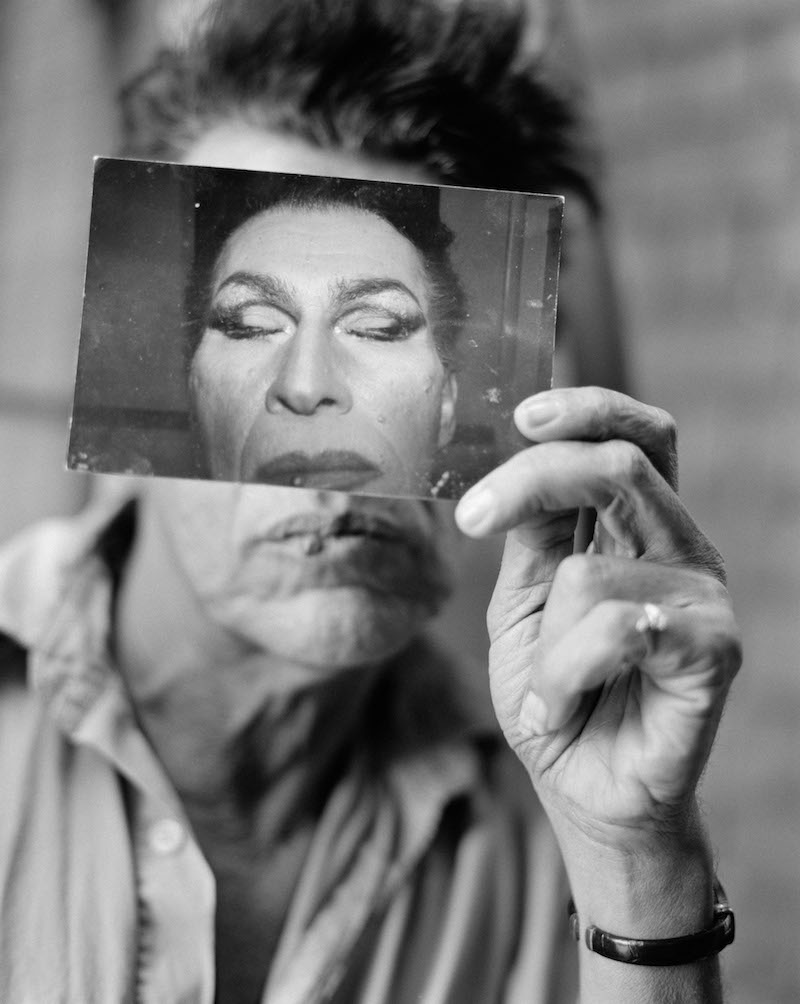
James Hosking: ‘Gustavo Holding A Photo of Himself As Donna,’ 2014, archival pigment print, 36” x 29” // Courtesy the artist
NE: What was it that drew you to Olivia Hart, Collette LeGrande and Donna Personna?
JH: All three intrigued me and, as cliche as it sounds, I had never met anyone like them. Their combination of toughness and vulnerability, self-deprecation and commitment to their craft was alluring. I wanted to spend time with them and hoped that others would, too, through the photos and the film. The three of them, though different in many ways, complement each other well.
NE: How exactly do these three performers engage with “liminal states that transcend gender and beauty conventions”?
JH: One way that Olivia, Collette and Donna engage with liminal states is through their willingness to be photographed while getting ready. Many performers would not want to reveal the steps of their transformation. Olivia, Collette and Donna had no such concerns. They allowed me to document the moments of interiority that occur while putting on makeup and clothing. It’s a vulnerable time and it was a privilege to be trusted by them.
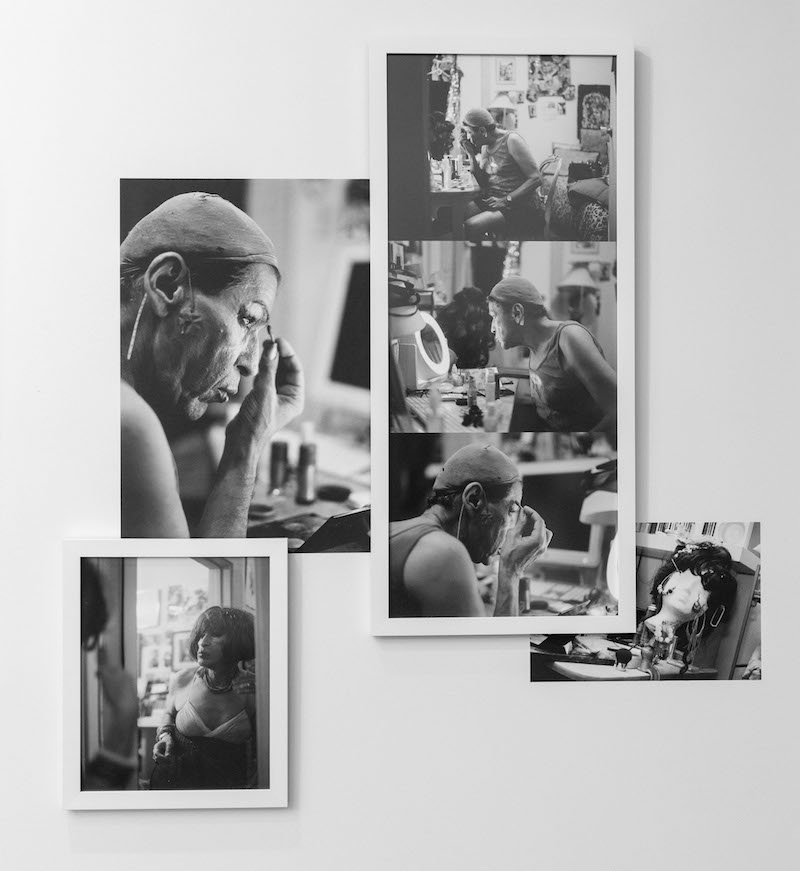
James Hosking: ‘Detail view of “Donna” wall (installation photo),’ 2013-2015 / 2021, framed archival pigment prints and archival pigment prints on adhesive photo tex, dimensions variable, pictured 47” x 49” // Courtesy the artist
NE: What do you find particularly interesting about the older performers?
JH: Older performers are able to tap into a lifetime of experience, both positive and negative, that informs their perspectives, performance styles and musical interpretations. There is a hard-won acceptance of their own identity and a willingness to embody humor and vulnerability on stage, a certain lack of self-consciousness that invites the audience in.
NE: You speak about your images being “visceral and honest.” In what ways do your photographs capture a realistic documentation of the performers?
JH: My photographs are not set in a studio; they’re taken in the performers’ homes and in the backstage area of Aunt Charlie’s. In the series, I strive to capture points in the performers’ nights as they play out and avoid posed moments and portrait set-ups. The textures of the environments are important for me to include.
In one image, Olivia puts on makeup in the makeshift kitchen-slash-bathroom of her SRO [low-income housing], and I wanted to include a sense of the room around her. My aim is to bring viewers into a part of her life that patrons at Aunt Charlie’s would never see or maybe even think about. It’s hidden domestic or backstage labor, an essential part of the process.
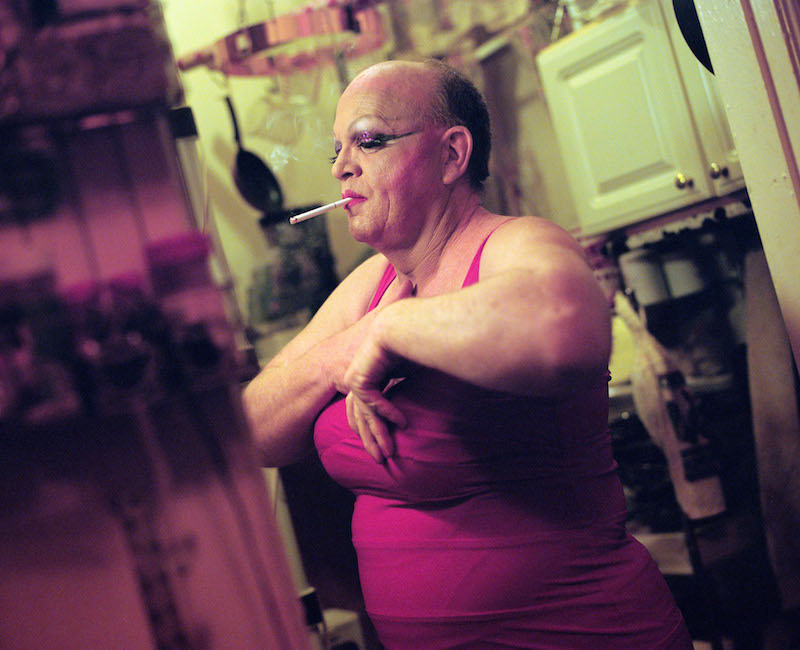
James Hosking: ‘Olivia At Home,’ 2014, framed archival pigment print // Courtesy the artist
NE: Can you speak about how the three performers feel continuing to work at an older age?
JH: I think they relish performing and the connection that audiences have with them. Even in the short time since the photos and movie were made, there has been a growing appreciation of the art form of drag and a deeper understanding of gender variance, counter to the accompanying backlash in rightwing politics. All three still live and perform in San Francisco and because of that enjoy continued recognition and celebration.
NE: How do you feel the audience perceives the older performers?
JH: It’s difficult to generalize, but I think it mirrors the broader perceptions of the culture at large, which spans from dismissiveness to connection and empathy. It depends on how audiences engage with the show and what they’re looking for in that experience. Does their engagement stay on an aesthetic surface level? Or do they want to connect with the performers through the emotion of the song or the intensity of the performance? Are they intrigued by the performer’s age and what experiences they bring to their drag, or is their age a detraction?
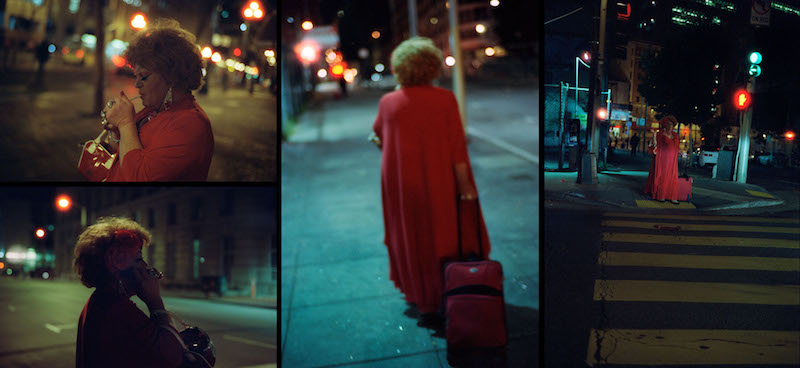
James Hosking: ‘Olivia Walking to Aunt Charlie’s,’ 2014, framed archival pigment print, 16.5” x 36” // Courtesy the artist
NE: In what way could ‘Beautiful By Night’ address the preconceptions or stigma attached to aging?
JH: In a visual culture saturated with images of youth, the project represents the aging body in an open and unapologetic way. LGBTQ culture can be particularly fixated on a narrow definition of youthful beauty. This series counters that with its forthright representations of older performers.
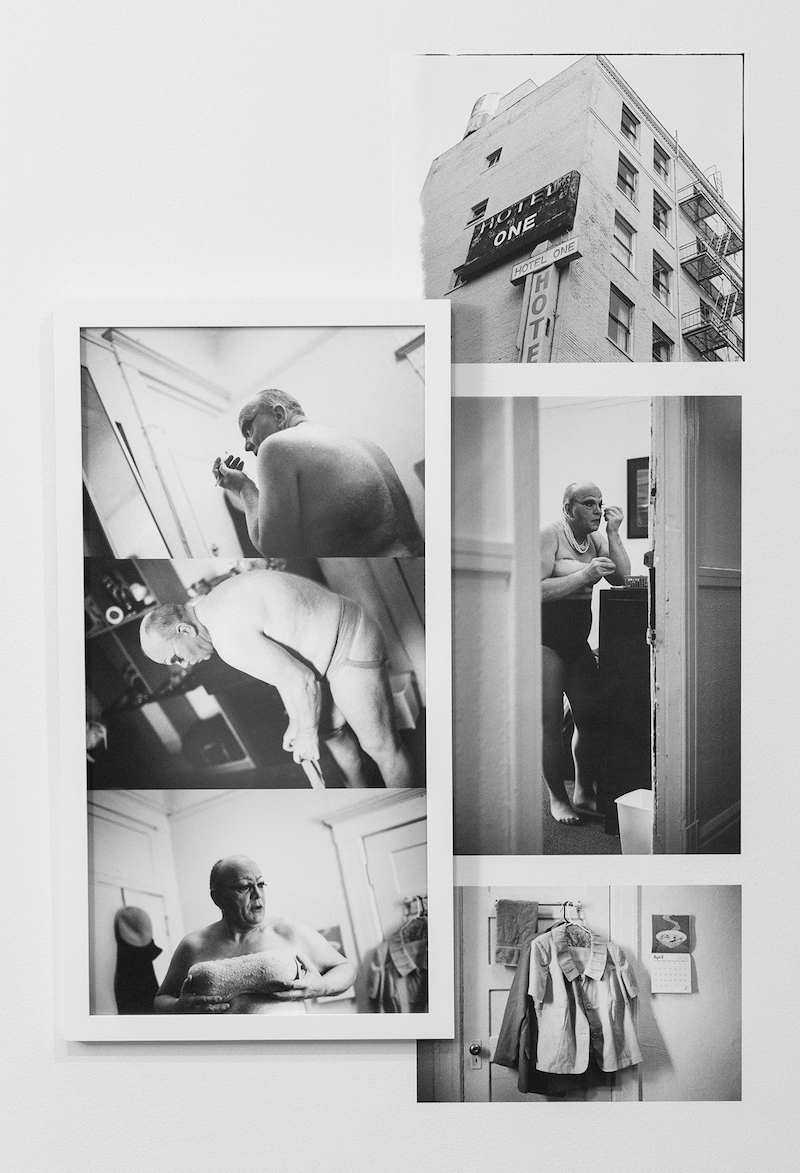
James Hosking: ‘Detail view of “Collette” wall,’ 2013-2015 / 2021, installation view, framed archival pigment prints and archival pigment prints on adhesive photo tex, dimensions variable, pictured 36” x 67” // Courtesy the artist
NE: Aunt Charlie’s Lounge is now the last gay bar in its area. Do you see the bar aging with its performers?
JH: I hope Aunt Charlie’s remains open in the Tenderloin for a long time. As San Francisco continues to change, with severe income inequality a fact of life, establishments like Aunt Charlie’s are increasingly rare. People are hungry for an authentic connection to LGBTQ bars and nightlife from another, oft-mythologized, era of San Francisco and queer experience in general. Aunt Charlie’s provides a sense of continuity from the past at a time when so many LGBTQ businesses, particularly in the Tenderloin neighborhood, have been erased. The bar’s longevity is due to the commitment of the owners and the longtime manager, Joe, to keep it open and the shows accessible. Aunt Charlie’s is also powered by the tenacity of the performers and the community’s support of them.
Artist Info
Exhibition Info
Chicago Artists’ Coalition
James Hosking & María Antonia Villaseñor-Marchal: ‘Raveling’
Exhibition: Apr. 28-June 8, 2023
chicagoartistscoalition.org
2130 W Fulton St unit b, Chicago, IL 60612, USA, click here for map






















